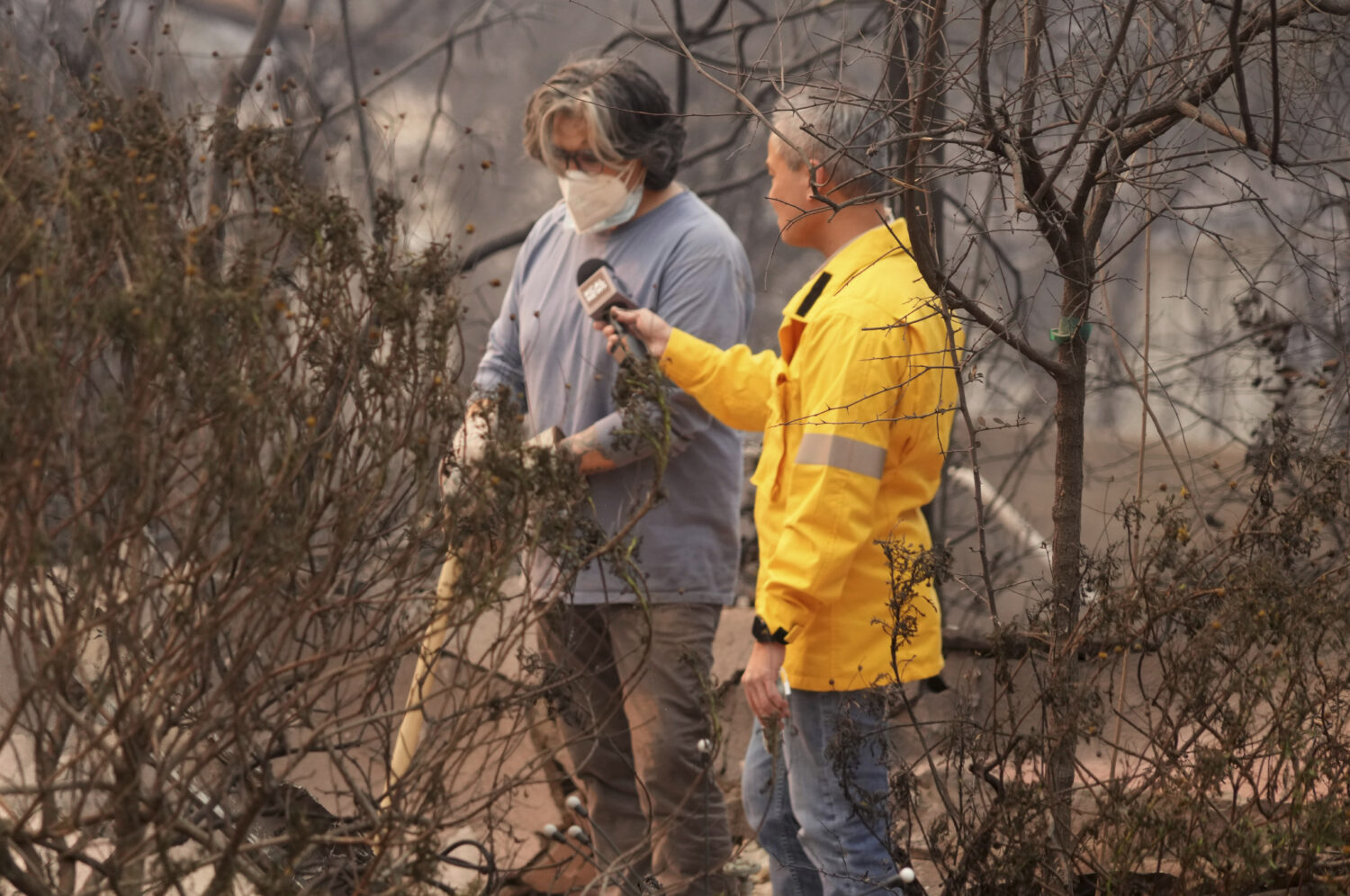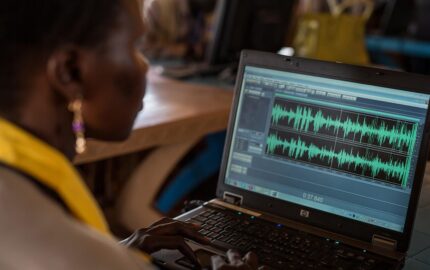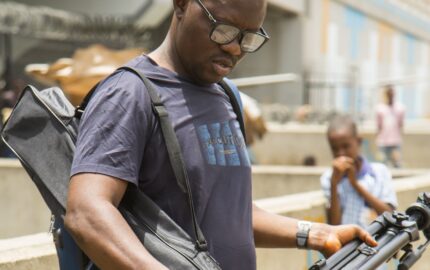The United States is radically downsizing environmental and climate investments, along with the Federal Emergency Management Agency (FEMA), at a time when climate-fueled disasters are on the rise. In 2024, damages from major disasters around the country totaled $182.7 billion dollars, according to the National and Oceanic Atmospheric Administration (NOAA). Journalists were able to report on that because the federal government provided data through a key NOAA database. One that is no longer being updated.
In April, the Trump administration axed funding for the next National Climate Assessment, mandated by Congress, and dismissed scientists contributing to it. These are just a few of the Department of Government Efficiency (DOGE)-led cuts making it harder to report on extreme weather, environmental protection and climate change.
This comes at a time when climate journalism is experiencing a renaissance. Still, the field faces serious challenges, from industry-wide layoffs to the online spread of climate misinformation during disasters and a rising tide of anti-science political sentiment.
There is often a disconnect, especially at local news outlets, between who is covering extreme weather disasters on breaking news desks and reporters on the climate beat with more specialized expertise. Local newsrooms may not have environmental or science reporters on staff at all. This contributes to widening the coverage gap between better-resourced national newsrooms with regional and local ones when it comes to climate reporting.
As a climate media scholar, I study news coverage of extreme weather. I offer six suggestions for how newsrooms can better report on compounding climate-fueled disasters: (1) meet audiences where they are and show your humanity; (2) pre-bunk and debunk misinformation effectively; (3) support journalists’ mental health and plan for physical safety; (4) training on climate attribution basics; (5) invest in innovative reporting partnerships; and (6) pair breaking news coverage with solutions reporting.
Meet audiences where they are and show your humanity
In the middle of a disaster — be it a heat wave, flash flooding, wildfires, or some other calamity — news organizations best serve their communities and audiences by putting vital information in front of as many eyes and ears as possible in accessible formats such as: evacuation maps and explainers, on Facebook Live, via text messaging, on TikTok, and geo-located extreme weather newsletters.
But sometimes, I’ve felt that the most human thing a journalist can do is help directly. The New York Times’ Kellen Browning wrote a powerful reflection about checking on readers’ homes in the evacuation zone while reporting in Pacific Palisades during the January LA wildfires.
Sharing your own story can help readers and viewers draw connections to the broader context like the Los Angeles Times’ climate columnist Sammy Roth did in his Jan. 14 “Boiling Point” column, writing: “Stepping out of my West L.A. apartment last week — wearing an N95 mask to avoid inhaling too many unhealthy particles — I was horrified by the gray-orange gloom from the Palisades fire blotting out much of the sky.”
Roth went on to place blame squarely on fossil fuel industry executives and decades of political inaction.
In the aftermath of those wildfires “Marketplace Morning Report” host David Brancaccio, whose own home burned down in the Eaton Fire, reported via Instagram on rebuilding. Sharing your personal story can humanize the often abstract impacts of climate change. After all, journalists are not always removed from what we cover, especially in moments of peril.
Pre-bunk and debunk misinformation effectively
Misinformation spikes during extreme weather disasters, be they wildfires in California and New Jersey, flooding in Kentucky or the aftermath of back-to-back Hurricanes Helene and Milton. Such opportunistic online disorder can hinder emergency response and recovery.
I researched mainstream media fact-checking of viral wind energy misinformation during the prolonged 2021 Texas power blackouts during Winter Storm Uri. What I found is that fact-checks — especially television news clips showing b-roll (supplemental footage in a news report), say, of a politician speaking — can inadvertently over-emphasize misleading or outright false information. This runs the risk of amplifying, rather than tamping down, misleading narratives.
The problem is that misinformation is “sticky” in people's minds. That is why “pre-bunking," or advance warning, works better than debunking after someone sees false information. Lead with the facts and warn that a myth is coming. Then, only very briefly mention the misleading claim in general terms without a direct quote or attribution to a specific person, and move on to emphasize the correction to reinforce accurate information. This type of “inoculation” against climate misinformation can help slow its spread.
Support journalists’ mental health and plan for physical safety
Safety while reporting on disasters is a longstanding challenge for newsrooms. Think weather reporters doing live shots during hurricanes. However, journalists now face new risks like life-threatening temperatures during heat waves. The New York Times’ Jack Healy, who reports from Phoenix, described living there to the Times’ “Climate Forward” newsletter in 2023 as, “Like being on the edge of death if you go for a walk.”
Healy further described his coping strategies for reporting in the Southwest: wearing long sleeves and pants to protect from the sun’s reflection off pavement, bringing frozen water bottles “everywhere” to stay hydrated, and being equipped with electrolyte packets to replace those lost through constant sweating.
Beyond the physical risks that come with reporting today, being on the existential beat can take a mental health toil. News outlets are increasingly recognizing this, but more action is needed.
Climate journalist Yessenia Funes, who was on a panel I co-organized on this topic at the 2024 Society of Environmental Journalists conference, has written, “Covering environmental and climate justice is hard work. It’s emotional. Holding space for these stories doesn't get easier. In the years I’ve been on the beat, it’s actually grown more painful.”
Funes is working with a group of mental health professionals and journalists on the CARES Media Initiative to elevate conversations within the industry about trauma-informed reporting.
Offer newsroom training ahead of the next disaster on climate attribution basics
The climate science field of extreme event attribution, or climate attribution, goes beyond climate change as a cause to parse out how much of the risk associated with a specific extreme weather event is linked to human-driven climate change.
Climate attribution research is most advanced for heat waves. Yet my research, conducted with my colleague Antal Wozniak from the University of Liverpool, into a deadly heat wave that hit the U.K. in 2022 — when the country saw temperatures exceed 40°C (104°F) for the first time — showed coverage fell short. The majority of press reporting in our sample failed to link the extreme heat to climate change even in general terms.
Journalism that centers climate justice is a must. Connect climate change-fueled disasters to the political and social vulnerabilities that exacerbate their impact. In other words, connect the dots between the devastation and the “politics of climate obstruction,” which the L.A. Times’ Roth did as the Eaton and Palisades fires burned. News coverage is still falling short on this.
This is why newsroom-wide training before the next crisis is crucial. Many projects are already underway, including from Climate Central’s Climate Matters, Covering Climate Now, the Oxford Climate Journalism Network, and the Solutions Journalism Network.
Invest in innovative reporting partnerships and accountability journalism
Early severe weather warnings save lives, as was the case with catastrophic flooding that hit the central Mississippi River valley in April. Yet, the National Weather Service is preparing for “degraded operations” due to Trump administration cuts, according to reporting by The New York Times. These cuts are creating gaps in weather and climate data collection that could cost lives.
News organizations can continue to fulfill their fourth estate role by holding the federal government accountable. And many are doing so, from Inside Climate News with its “Trump 2.0” series to digital news startups like Heatmap News.
Reporting partnerships, like Climate Central’s with The Daily Yonder investigating Hurricane Helene’s toil on pregnant women, might help do these stories justice through newsrooms pooling resources. Recently 12 nonprofit newsrooms launched the Climate News Task Force to support collaboration.
Public interest reporting, of course, takes money. And, independent climate journalism needs more of it. In January, the MacArthur Foundation announced $6 million in general operating grants to 12 newsrooms, professional associations and collaborative climate journalism projects. Media funders need to step up and do more to support quality climate reporting.
Pair breaking news coverage with solutions reporting and sustain attention to recovery
Disasters can fuel climate anxiety and “doom and gloom” media narratives, and justifiably so. Yet, my research into heat wave coverage showed that climate solutions were rarely mentioned, and if at all, usually only in passing. That’s a major missed opportunity. Bringing in discussion of solutions alongside, or in the wake of, disasters can help foster much-needed hope and agency at times when public attention is heightened.
Responsibility for improving climate reporting shouldn't fall solely to individual journalists and editors. In the face of Trump-era cuts, industry-wide investment and newsroom leadership are crucial to better serve the public with news they need that connects the dots to climate action.
Jill Hopke, Ph.D., is an associate professor of journalism at DePaul University in Chicago, where she teaches climate change communication and climate journalism.



